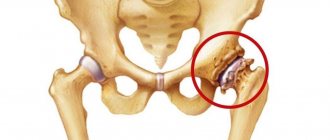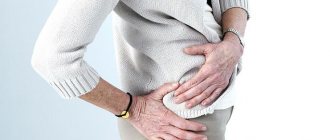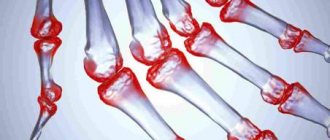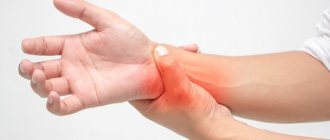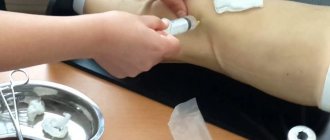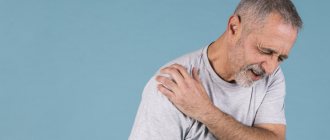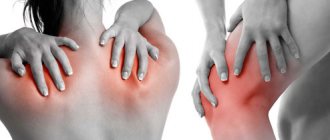The IMMA network of medical clinics provides consultations to leading rheumatologists and orthopedists. Many years of experience in successfully diagnosing and treating arthritis both in the early and late stages allows us to quickly identify or exclude joint disease.
According to WHO, arthritis is the most common musculoskeletal disease worldwide. For every thousand people there are 10 officially registered cases. Arthritis affects both young and old people equally. If only 20 years ago, leading rheumatologists confidently stated that the disease was most often diagnosed in women after 40 years of age, but now the trend has changed. The boundaries of age and gender are gradually disappearing. Arthritis develops rapidly in children and adolescents.
What is arthritis
The term "arthritis" was first used by Hippocrates, and then for many centuries it was used to refer to any joint diseases. It was only in the 19th century that inflammatory joint diseases (arthritis) and degenerative or metabolic diseases (arthrosis) began to be distinguished.
Currently, arthritis includes only inflammatory diseases of the joints of various origins. Arthritis codes according to the International Classification of Diseases, 10th revision (ICD-10) M00 – M14.
In recent years, there has been an increase in the incidence of this pathology throughout the world. This is due to a sedentary lifestyle, excess weight and reduced immunity. The disease can develop at any age. Thus, juvenile arthritis develops in children under 16 years of age, rheumatoid arthritis more often affects women aged 40 to 55 years, infectious and traumatic are equally common among adults and children.
Etiology and pathogenesis - why and how the disease develops
The causes of arthritis are not always identified. Sometimes there is not one reason, but several, this is:
- Local infection.
Pathogens can enter the joint through small blood and lymphatic vessels from nearby tissues when they are inflamed - boil, abscess, phlegmon. Acute arthritis develops. If it is not treated, it will either go away on its own or become chronic, which is always problematic to treat. - General infection.
For example, with tuberculosis or gonorrhea, bacteria enter the joint through the circulatory or lymphatic system. Tuberculous or gonorrheal arthritis develops. - Toxic-allergic effects in any infectious diseases.
It is not the infectious agents that enter the joint, but their waste products. They have a toxic effect on joint tissue and cause allergic inflammatory reactions of varying strength. - Autoallergy
is an allergy to the body's own tissues. Under the influence of various mechanisms (most often after an infection or in the presence of a permanent focus of infection, for example, chronic tonsillitis), malfunctions of the immune system occur. Immune cells and antibodies begin to perceive joint tissue as foreign and attack them, causing a long-term, difficult-to-treat inflammatory process. Such diseases include rheumatoid arthritis. - Injuries.
Through open injuries, infection can enter the joint, causing inflammation. Closed injuries lead to the development of aseptic (without infection) inflammation, which is then sometimes accompanied by an infection that penetrates through the blood from distant foci.
Predisposing factors that increase the risk of developing the disease are hypothermia, excess weight (high load on the joints), a sedentary lifestyle, hormonal disorders, heavy physical activity and frequent injuries.
Read about post-traumatic arthritis in this article.
Arthritis symptoms
The main symptoms of the disease are: joint pain, limited mobility, swelling of articular and periarticular tissues, redness of the skin, local fever. These symptoms may appear to a greater or lesser extent depending on the course of the disease (acute, subacute or chronic).
First signs
It is very important to know how arthritis begins. Acute inflammation begins suddenly with redness and swelling of the tissue over the affected joint, restriction of movement due to pain. The general condition is disturbed, headache, malaise, and fever appear. The cause of acute arthritis is the penetration of a nonspecific infection into the joint, most often Staphylococcus aureus. If these symptoms of arthritis appear, you should immediately consult a doctor.
Sometimes the first symptoms of inflammation are less pronounced and smoothed out. The danger of such a course is that it often turns into a long-term, chronic one. This onset is typical, for example, of rheumatoid arthritis.
Some arthritis (for example, tuberculosis) begin unnoticed, and their course immediately becomes long-term and chronic. There may be no visible swelling, but pain and crunching when moving appear, which are accompanied by other symptoms over time.
Obvious symptoms
The obvious symptoms of arthritis are difficult to confuse with the symptoms of other diseases. These are swelling and redness of tissues, pain, and movement disorders. The pain is inflammatory in nature: it intensifies at night and decreases in the morning, with movement.
In some forms of the disease, swelling and redness of the tissues may be less pronounced and even completely absent. With these types of arthritis, pain during movement and changes in joint deformation come to the fore. Nighttime inflammatory pain is also characteristic. When palpated, a painful compaction of soft tissues is noted due to changes in muscles and ligaments, as well as the proliferation of connective tissue.
Arthritis is inflammation of the joints.
Dangerous symptoms
It is better not to start the disease, as serious complications may begin. You should seek medical help immediately if you experience the following signs of arthritis:
- joint pain accompanied by redness and swelling of the tissues;
- a sudden rise in body temperature, accompanied by pain in one or more joints;
- night joint pain and morning stiffness that goes away after the start of movement;
- the joint has increased in volume; upon palpation, compacted, painful soft tissue can be detected;
- pain and other signs of inflammation in the joint during arthritis appear and then pass.
How to cure chronic arthritis
Managing chronic arthritis is a lifelong task that involves daily exercise, following a diet (luckily not a strict one!), taking preventative medications, using orthoses, and attending physical therapy. Maintaining such a regimen allows patients to do without heavy drug treatment and control the disease with minimal effort
Physiotherapy for chronic arthritis
Physiotherapeutic techniques are aimed at eliminating pain and other inflammatory symptoms in the joint due to chronic diseases, including arthritis. These techniques should be divided into two groups:
- procedures that are allowed during the period of acute chronic arthritis (for example, drug electrophoresis, cryotherapy);
- procedures that are carried out strictly in a state of remission (therapeutic massage, therapeutic exercises, amplipulse and others).
A general list of techniques that can alleviate the condition of a patient with chronic arthritis of the joints includes:
- phonophoresis;
- laser therapy;
- magnetic therapy;
- ultrasound therapy;
- shock wave therapy;
- electromyostimulation;
- acupuncture;
- thermotherapy;
- electrophoresis;
- paraffin applications;
- ozokerite;
- ozone therapy;
- mud therapy and balneology;
- hirudotherapy.
To treat chronic arthritis, it is necessary to support the joint and relieve stress on it - for this, the doctor may prescribe special orthopedic insoles for shoes, walking canes, and joint fixators.
Massage for chronic arthritis
Massage for chronic arthritis is carried out exclusively in a state of remission! The attending physician must confirm the absence of inflammation in the joint. For home rehabilitation, the following types of massage movements are allowed:
- stroking (along the muscles and circular);
- rubbing and pulling;
- palpation (deep massage) and pinching;
- grasp the skin and muscles with the palm and moderately pull.
Under no circumstances should you experience pain when performing these movements! Only slight tension is allowed, which is replaced by pleasant warmth and relaxation around the joint.
Please note that massage for chronic joint arthritis should be given at least 10-15 minutes a day. It is advisable to combine it with baths (before the massage), application of medicinal ointments, creams or gels (during the massage), as well as therapeutic exercises (after the massage). In this case, the massage is carried out not only at the location of the joint, but also in the surrounding areas. For example, if the knee joint is affected, the thigh and ankle are also massaged.
Exercise therapy for chronic arthritis
During remission of a chronic disease - arthritis - patients are recommended to moderate physical activity, which allows them to preserve muscle mass, reduce the load on the joint by strengthening muscles and tendons, and also maintain joint mobility.
An individual list of exercises for each sore joint is determined by the instructor. But, in the absence of contraindications, “general” warm-ups for the whole body are useful, which can be started right in the morning:
- Body rotations. The left hand is on the belt, the right hand is placed behind the back at shoulder level. Turn your body back without jerking. Repeat on the other side.
- “The sprout reaches for the sun.” Stretch your arms up and stretch, standing up on your toes.
- "Penguin". Place your arms straight behind your back at shoulder level or slightly higher. Bring them together, moving your shoulder blades, and then move them forward, as if flapping your wings.
- Body tilts. They can be performed in different ways - for example, with your arms raised up or holding one hand on your belt and the other above your head. Side bends are especially useful.
- "Cat". Get on all fours, alternately arching your back and bending it down.
- On all fours, raise your left leg and right arm parallel to the floor and hold for a few seconds. Change sides.
If you have a gymnastic stick, add the following exercises:
- Grasp the stick by the ends with an overhand grip, holding it in front of you. Pull the bar to your chest and return to the starting position. Repeat with an underhand grip.
- Place the stick behind your head and begin to “saw” the back of the neck, fully straightening one or the other arm.
- Place the stick behind your back and “swing” it left and right.
- Sit down, place the stick vertically in front of you and begin to move your hands along it from top to bottom and back.
How dangerous is the disease?
Arthritis is a dangerous disease. It occurs in several stages and can cause serious complications.
Arthritis stages
With a long course, the inflammatory process is combined with a dystrophic one, which leads to the development of arthrosis, constant pain in the joints due to arthritis and complete disability of the patient.
- Stage – initial.
The occurrence of inflammation and swelling of the synovial membrane. The first joint pains appear, the volume of synovial fluid increases, the periarticular soft tissues swell and redden, and motor function is impaired. The general condition of the patient often suffers. - Stage – formation of pannus.
At the site of inflammation, connective tissue grows, covering the surface of the cartilage and destroying it. Pain increases with movement, and nighttime inflammatory pain is typical. Externally, swelling may decrease, but thickening of the periarticular soft tissues appears. - Stage – formation of fibrous ankylosis (joint immobility).
The cartilaginous surface of the bones is destroyed, the connective tissue tightly fuses with the bone tissue, forming a sedentary joint. Joint function is impaired. Exacerbation of the inflammatory process alternates with remission. - Stage – bone ankylosis.
In place of the connective tissue, bone grows, and the joint becomes completely immobile. Disability.
4 stages of arthritis
Any form of arthritis has serious complications, so you should not delay treatment.
See how easily the disease can be cured in 10-12 sessions.
Possible complications
The disease must be treated as early as possible, otherwise it is difficult to avoid complications. Different types of arthritis cause different complications. The most common are:
- transition of an acute inflammatory process to a chronic one with a long, relapsing course, accompanied by severe pain;
- the formation of arthrosis, motor dysfunction and disability;
- with purulent arthritis, the spread of infection to other organs and systems, the occurrence of multiple purulent processes, sepsis.
Exacerbation
In the chronic course of arthritis, exacerbations alternate with remissions. The symptoms that appear depend on the clinical form of the disease. But in any case, inflammation is accompanied by swelling and redness of the soft tissues of the affected joint, increased pain and limited motor function.
At the first sign of worsening arthritis, you should immediately seek medical help. This is the only way to stop the progression of the disease and destruction of the joint.
If the pain is very severe, you can take a medicine from the group of non-steroidal anti-inflammatory drugs - Diclofenac, Nise, Ibuprofen, etc. But only a doctor can prescribe full treatment!
Causes of the disease
Inflammation of the joints of the musculoskeletal system is a pressing problem for modern people. Rheumatoid arthritis, which is a type of autoimmune disease, mainly affects people of working age after forty years, and it is five times more common in women than in men. The main causes of joint disease are considered to be:
- Genetic predisposition associated with abnormal chromosome structure. Blood relatives are four times more likely to have rheumatoid arthritis.
- Infections - viral diseases: rubella, herpes, retrovirus, Epstein-Barr. All of them are factors contributing to the development of the inflammatory process in the joints.
- Unfavorable environmental conditions: radioactive radiation, constant exposure to low temperatures, chemical pollution.
- Systematic stressful situations, emotional overload. Autoimmune arthritis in the female half of the population often occurs during pregnancy, after childbirth, abortion, and during menopause.
- Rapid increase in body weight.
- Alcohol and tobacco addiction.
All of the above factors contribute to the development of the inflammatory process, primarily in the cartilage tissue of the joints.
Features of arthritis of various localizations
While the symptoms of arthritis are generally similar, the manifestation of the inflammatory process in different joints has its own characteristics.
Arthritis of the joints of the lower extremities
The lower extremities have the highest load, so joint inflammatory processes in this area are more aggressive, more often worsen and turn into arthrosis. Features of various arthritis of the joints of the lower extremities:
- Hip joint.
A common cause of hip arthritis is tuberculosis. It occurs chronically, accompanied by pain and the formation of ankylosis. But timely treatment can prevent the progression of the disease. - Knee-joint.
Nonspecific purulent and gonorrheal inflammatory processes often develop here. Purulent arthritis can be severe, the knees hurt very badly, the patient often requires hospitalization, sometimes even surgery. Gonorrheal arthritis of the knee joint with timely treatment goes away without consequences, but if left untreated, the course can become chronic with the formation of ankylosis. - Ankle joint.
The occurrence of a purulent inflammatory process often occurs with a foot injury. Arthritis of the ankle joint is severe. Infectious processes: gonorrheal, dysentery, fungal, with timely prescribed treatment, pass without consequences. - Heel.
Arthritis of the talocalcaneal joint is most often the result of constant injury in athletes, people engaged in heavy physical labor, or those who are overweight. At the very beginning, the disease begins imperceptibly with unpleasant sensations in the heel area, turning into pain. Then the pain spreads to the entire foot. If you do not consult a doctor in a timely manner, disability is inevitable.
Arthritis of the joints of the lower extremities
Arthritis of the joints of the upper extremities
Arthritis of the hand joints also occurs in different ways.
- Shoulder joint.
Different types of inflammation can develop in this area: acute purulent arthritis, rheumatoid, tuberculosis, traumatic, etc. There is pain in the shoulder, which intensifies with movement, redness and swelling of the skin. A patient with shoulder arthritis needs immediate help. - Elbow joint.
The most common lesions are traumatic and rheumatoid forms of elbow arthritis. The disease is painful, which in most cases forces patients to consult a doctor in a timely manner, so ankylosis rarely ends. - Joints of the hand and fingers.
These are mainly autoimmune lesions with the development of the rheumatoid process. They occur chronically with exacerbations and remissions. The main symptoms of arthritis of the joints of the hand and fingers are severe pain, it is impossible to cope with it on your own; the help of a doctor is required. Very often, with such arthritis, deformities of the joints of the hand and fingers develop like flippers with the development of dislocations and subluxations.
Arthritis of the joints of the upper extremities
Cervical arthritis
Arthritis of the joints of the cervical vertebrae most often has an autoimmune and traumatic origin. Rheumatoid lesions of the spinal joints (Bechterew's disease) mainly affect young women. Inflammation develops against the background of existing lesions in other joints (usually small joints of the hand) and occurs with headaches, pain and immobility in the neck, and general malaise. Often accompanied by articular subluxations.
Traumatic arthritis develops against the background of neck injuries and can also be severe, with subluxations, frequent exacerbations and constant pain. Cervical arthritis of any origin is subject to long-term treatment under medical supervision.
Temporomandibular arthritis
The most common cause of arthritis of the temporomandibular joints is a nonspecific infection. In arthritis, it enters the joint with the bloodstream from distant foci of infection or from nearby tissues during sore throat, otitis media, and dental inflammatory processes. Inflammation develops with a disturbance in the general condition, severe pain when moving the lower jaw. Opening the mouth may be accompanied by displacement of the jaw and subluxation of the joint. The danger of the disease lies in proximity to the brain and infection on the meninges. If you suspect this disease, you should immediately consult a doctor.
Chondroprotectors: what are they, how to choose, how effective are they?
Joint pain at rest
Therapy methods
The most important tasks in the treatment of arthritis are:
- Reducing the inflammatory process in the synovial area to maintain and normalize the dynamic ability of the joints.
- Preventing the development of a destructive process.
Treatment methods for autoimmune arthritis include a whole range of different measures:
- Relieving symptoms – most often you have to deal with painful sensations. They can be easily treated with NSAIDs.
- Basic therapy - it begins immediately after the disease is detected. With the correct prescription of drugs, it is possible to relieve inflammation and achieve remission for a long period. First-line drugs, for example, Methotrexate, are especially effective; second-line drugs are less effective and are used if the first are intolerant.
- Local treatment - rubbing with ointments and other means are used, for example, compresses for joints with Dimexide.
- Physiotherapeutic procedures eliminate inflammation and reduce pain. Used at various stages of the disease.
- Surgical intervention is used extremely rarely if there is no effect from conservative treatment.
- Folk remedies - used only after consultation with a doctor. Very often, traditional healers recommend burdock and bay leaves.
- Dietary nutrition is an invariable condition for the successful fight against arthritis.
Types of arthritis
Arthritis is a large group of diseases with very different origins and courses. Arthritis is divided into acute, subacute and chronic. Based on the nature of the inflammatory fluid (exudate) in the joint cavity, the following types of arthritis are distinguished:
- serous
– non-purulent, often develops with a viral infection; - serous-fibrinous
- in addition to non-purulent exudate, fibrin protein is deposited in the joint cavity, from which connective tissue is subsequently formed, causing persistent deformation and impaired motor function; - purulent
- the most severe type of arthritis, leading to damage not only to the synovial membrane, but also to all other structures (cartilage, cat tissue, etc.), destruction of the joint and severe purulent complications.
Acute purulent
Nonspecific (pyogenic, purulent) arthritis is caused by staphylococci, streptococci, pneumococci and other nonspecific (capable of causing any inflammatory processes) infection. They are severe, but can be completely cured. The onset is acute and sudden. Body temperature rises, chills, malaise, and headache appear. At the same time, pain appears in the affected joint. The periarticular tissues are swollen, the skin is reddened and hot to the touch. Movement causes severe pain.
In the absence of immediate help, purulent inflammation spreads to surrounding tissues and can spread through blood vessels to distant organs, causing severe complications. A joint with arthritis can be completely destroyed, and after recovery, persistent ankylosis will form.
But modern treatment methods make it possible to help the patient even at advanced stages of the disease. In most cases, the disease ends in recovery.
Chronic
It can develop against the background of an acute inflammatory process in the absence of timely assistance. Some forms (rheumatoid, tuberculous) have an initially chronic course.
Patients complain of pain in one or more joints, worsening at night and decreasing after the start of physical activity. Stiffness of movement and sometimes swelling in the affected area are also characteristic. As the disease progresses, all these symptoms increase. It takes a long time, with exacerbations and remissions, and in the absence of timely treatment can lead to complete loss of joint function.
Arthrosis deformans
Against the background of long-term chronic arthritis, deformation gradually develops in one or more joints. Initially, the change in shape occurs due to dense inflammatory edema. But then, after each exacerbation, connective tissue grows, gradually destroying the cartilage and causing immobility of the joint.
Arthrosis deformans
After some time, the bone tissue grows and ankylosis forms. Bone growths, subluxations and dislocations lead to deformation and complete loss of limb function.
Symptoms and signs of knee arthritis
Arthritis of one or both knee joints affects the functioning of the entire body, and therefore the manifestations of the disease are complex. The first and most noticeable symptom of knee arthritis is pain. As a rule, it is unexpected, shooting when the joint is flexed or extended (especially sharply). But it can also be aching, bursting (“legs twist”) after a long rest or overwork of the legs. Pain may occur when pressing or walking.
In addition to pain, joint symptoms of knee arthritis include:
- swelling - the knees become noticeably swollen, and the leg is shaped like a spindle;
- redness and increased temperature of the skin over the kneecap;
- feeling of heaviness in the legs;
- growths, nodes, palpable or noticeable to the naked eye, joint deformities;
- changes in gait (caused by joint deformation or an attempt to compensate for the load, a “gentle” attitude towards the joint);
- joint stiffness.
Extra-articular signs of knee arthritis include:
- an increase in temperature that is accompanied by fever or chills or persists for a long time;
- sweating;
- swelling of the lymph nodes;
- lack of energy, muscle weakness, drowsiness;
- poor appetite and weight loss.
In addition to the inflammatory process, a common symptom of arthritis of the knee joint is a feeling of numbness, stiffness, deterioration of flexibility and mobility. You can recognize the disease in the earliest stages by the characteristic tension of the muscles, which cannot be relaxed by force of will - only “stretched” manually. In the morning, it becomes increasingly difficult for the patient to begin daily activities without some kind of warm-up in the form of rubbing, stretching, and medications for knee arthritis. After a long rest (usually overnight), the condition of the limb noticeably worsens, but after an hour of activity, pain and stiffness recede or even go away altogether.
Not all of the listed symptoms of arthritis of the knee joint are observed at the same time and greatly disturb the patient - the patient may occasionally notice only 2-3 signs until the disease progresses to later stages.
The intensity of symptoms may subside in a state of remission - sometimes it occurs even without taking medications, however, degenerative processes in the joint and its deformation in this case continue, proceeding covertly. A sharp increase in symptoms indicates that the erosion of the articular surfaces is worsening and the affected area is increasing. Treatment of knee arthritis in this case is required immediately, since the disease is aggressive.
Clinical forms of arthritis
Based on the origin (cause of the disease) and characteristics of the course, the following forms of arthritis are distinguished:
- Primary (independent diseases):
- rheumatoid;
- rheumatic;
- ankylosing spondylitis (ankylosing spondylitis) – inflammation of the joints of the spine;
- infectious: tuberculosis, gonorrheal, viral, etc.
- infectious-allergic (reactive); reactive arthritis + conjunctivitis + urethritis after an intestinal infection or urinary tract infection (Reiter's disease);
- psoriatic.
- Secondary (develop against the background of some other diseases):
- metabolic (gout);
- systemic connective tissue diseases (systemic lupus erythematosus);
- diseases of the gastrointestinal tract, lungs and other organs and systems.
- Traumatic.
- Juvenile idiopathic arthritis (JIA) is inflammation of the joints of unknown origin in children under 16 years of age.
Infectious
Specific infectious arthritis develops with bacterial (brucellosis, tuberculosis, gonorrhea), fungal, viral (infectious hepatitis, measles, rubella), parasitic (echinococcus) infections.
The course of this type of disease depends on the type of infection. Thus, with gonorrhea, acute serous inflammation most often develops, which, with timely prescribed therapy, is completely cured. The tuberculous joint process is chronic, often leads to loss of function, and is difficult to treat. Viral lesions usually resolve after recovery from the infection.
Rheumatoid
It is an autoimmune disease that develops mainly in genetically predisposed people against the background of changes in the immune system, which does not recognize the proteins of human tissues and begins to attack them as foreign, causing a long-term inflammatory process. The causes of rheumatoid arthritis are not exactly known, but it is believed that it starts with an infection. Infectious agents entering the body cause an allergic reaction and alter the functioning of the immune system.
Crunching in joints - when to worry
Intra-articular injections of hyaluronic acid
The disease begins with a moderate increase in body temperature, morning stiffness, pain and swelling of the joints. Sometimes all the primary symptoms spontaneously disappear for several months, but then return and the disease progresses. In some patients, progression of the disease is observed from the very beginning.
The most characteristic symptom is symmetrical arthritis affecting the small joints of the hand and fingers, but in some patients the disease begins with damage to large joints - knee, shoulder, etc. The course is wavy: exacerbations are replaced by remissions. Over time, articular cartilage is destroyed, connective tissue grows, subluxations and dislocations develop, which leads to disability.
Modern treatment methods can suppress the progression of the inflammatory process, so it is very important to seek medical help as early as possible.
Traumatic
Develops after injury to large joints - hip, knee, shoulder, etc. If the injury was closed, an aseptic (without infection) inflammatory process develops, which can go away on its own. With an open injury, an infection occurs and the process can proceed as an acute purulent one. If you have a joint injury, it is better to consult a doctor immediately.
Psoriatic
Joint damage in psoriasis most often occurs several years after the onset of skin symptoms. But in some cases, joint symptoms appear before the appearance of skin rashes. And since the symptoms of arthritis are in many ways similar to rheumatoid arthritis, they have to be differentiated.
A feature of this form of the disease is damage to the terminal interphalangeal joints of the fingers and nails. At the same time, inflammation develops in several other joints. The lesion is asymmetrical. The process occurs in waves with relapses and remissions and can lead to loss of joint function. With timely and adequate treatment, the process can be stopped.
Reactive (infectious-allergic)
This form is associated with an allergy to an infection. Often found in children and adolescents, it develops 4–7 days after an infectious disease (usually an intestinal, genitourinary or nasopharyngeal infection). It occurs acutely, affecting one to three (sometimes more) large joints. They swell, turn red, and local and general temperature rises. A feature of the disease is the absence of infectious agents in the joint cavity. The disease progresses benignly, but requires timely administration of adequate treatment.
Reactive arthritis includes Reiter's disease, a combined lesion of the joints, conjunctiva of the eyes and urethra after genitourinary and intestinal infections. Develops mainly in young men. Characterized by a long (several months) course, ending, as a rule, with recovery.
Juvenile idiopathic arthritis (JIA)
This is an inflammation of unknown origin with the exception of other joint pathology. The disease develops in children under 16 years of age. It is believed that there can be many reasons for the development of arthritis, but the basis is the genetic predisposition of the child. Girls get sick especially often. The disease lasts a long time with exacerbations and remissions, often causing early disability in a child.
Gouty
Gout is a metabolic disorder, the main symptom of which is an increase in the level of uric acid in the blood and the deposition of its salts (urates) in the articular and periarticular tissues. Urates penetrate into the tissues, forming gouty nodes - tofs. During an attack of gout, acute inflammation develops with tissue swelling and severe pain.
Most patients first develop arthritis of the 1st metatarsophalangeal joint of the hands. Then both small and large joints can be affected. The first years after attacks, the joints do not change, but over time, tophas form, deformation and disruption of joint function occur.
Classification
Arthritis, depending on the cause and clinical form, is of the following types:
- rheumatoid arthritis associated with malfunctions of the immune system;
- rheumatic, with chronic connective tissue disease with predominant damage to the heart and joints;
- ankylosing spondylitis, or ankylosing spondylitis - inflammation of the joints of the spine;
- infectious, with direct penetration of infectious agents into the joint;
- reactive arthritis - an immune response to a previous infectious disease;
- psoriatic arthritis is a chronic immune-mediated inflammatory disease of the osteoarticular system that develops in patients with psoriasis;
- gouty – occurs due to the deposition of uric acid in the joints;
- inflammation in systemic connective tissue diseases, for example, systemic lupus erythematosus;
- arthritis due to diseases of the gastrointestinal tract, lungs and other organs and systems;
- traumatic, occurring after an injury;
- juvenile idiopathic arthritis in children under sixteen years of age.
Based on the number of joints affected, monoarthritis is distinguished with inflammation of only one, oligoarthritis, if two or three areas are affected, and polyarthritis - a disease of more than three joints.
The process can be acute or chronic. In the first case, it develops rapidly, accompanied by severe pain and inflammation in the tissues. Chronic disease progresses gradually, slowly turning into a serious disease.
Diagnosis of arthritis
Diagnosis of arthritis
In order to prescribe adequate treatment, it is necessary to find out the causes of arthritis, its main symptoms, and the condition of the joint. To establish the final diagnosis (clinical form and type of arthritis), the following studies are carried out:
- Laboratory diagnosis of arthritis:
- general clinical blood test - shows the severity of the inflammatory process;
- biochemical blood test - allows you to identify the cause of inflammation;
- immunological blood test - the presence or absence of specific antibodies to infectious pathogens or the patient’s own tissues;
- if necessary, the joint fluid taken from the joint during arthroscopy is examined under a microscope and microbiologically (culture) to detect infection.
- Instrumental diagnosis of arthritis:
- Ultrasound - allows you to detect an increased volume of joint fluid;
- X-ray – reveals bone and joint changes;
- magnetic resonance imaging (MRI) – allows for the assessment of early changes in soft articular and periarticular tissues;
- arthroscopy is an endoscopic examination of a joint, allowing one to examine its inner surface.
Arthritis stages
Determining the stage of arthritis is an important diagnostic step
, which allows you to select appropriate treatment and monitor the rate of disease progression. Experts distinguish 4 stages, depending on the severity of the symptoms of arthritis, damage to cartilage and bone tissue.
1st stage of arthritis
Arthritis can begin unnoticed by the patient himself, because most symptoms of joint arthritis appear only at the 2nd stage. Particularly attentive patients note slight stiffness in the diseased joints and slight swelling, which is not helped by reducing salt in the diet. Mild pain may be felt when flexing and extending the joint, especially sharply. Patients complain of increasing fatigue and decreased stamina.
The initial stage of disease of the knee or shoulder joint is especially insidious
- in this case, the symptoms of arthritis are usually attributed to age-related changes or fatigue after a hard day.
Parents can notice grade 1 arthritis in a child by a decrease in his activity, lack of interest in games, frequent falls and awkwardness when performing physical exercises. A sick child does not like to run, avoids physical work, is capricious and whines if he is forced to exercise.
Although difficult to diagnose, stage 1 arthritis is the most treatable
. With a late onset of the disease, the prognosis is favorable: therapy may result in complete restoration of cartilage tissue.
Stage 2 arthritis
At stage 2, the pain becomes difficult to ignore. The pain syndrome intensifies in the morning and at night and can disrupt the patient’s healthy sleep. The swelling is clearly visible from the outside, but the patient himself may notice an unusual knotty or spindle-shaped shape of the fingers, thickening of the limb (associated with the accumulation of synovial fluid) in the joint and other visual signs of inflammation. At the 2nd stage of arthritis of the leg joints, gait disturbances and pain when walking are added to the symptoms.
At stage 2, irreversible changes and erosions may appear on the synovial membrane
.
Without the use of chondroprotectors - for example, Artracam sachet
- it is quite difficult to stop or slow down the process of cartilage destruction.
Stage 3 arthritis
At stage 3, visual changes and pain become significant. The joint becomes deformed, and when performing movements there is severe stiffness and pain. The simplest everyday activities cause difficulties for the patient. Even in the absence of loads, during rest, diseased joints continue to bother the patient. At this stage, most patients partially lose their ability to work - they may be assigned a disability.
Stage 4 arthritis
At the last stage of arthritis, the affected joints completely lose mobility
.
Pain torments patients continuously, creating a serious psycho-emotional burden. At this stage, only surgical treatment is indicated, since the cartilage tissue is almost completely destroyed, and the edges of the bones begin to grow together. At stage 4, the disease is irreversible
, accompanied by loss of the ability to self-care and/or independent movement, and persistent contractures.
There are 4 stages of arthritis
To make a diagnosis and exclude similar diseases, a rheumatologist performs an initial examination, palpation (palpation) of the affected joint, as well as motor tests. At the first appointment, a medical history is taken, the patient is asked about the symptoms of arthritis, after which the specialist issues a referral for tests and hardware examinations. Among them:
- general and biochemical blood test, rheumatic factor test;
- X-ray examination (in 2 standard projections);
- puncture and analysis of synovial fluid;
- arthrography (x-ray examination with preliminary administration of a contrast agent - usually performed during an inflammatory process in the shoulder or knee joint);
- arthroscopy (insertion of a sensor directly into the joint cavity through a microincision);
- Ultrasound (for large joints such as the shoulder or hip);
- serological reactions to a pathogen or antibodies to an infectious agent.
Thus, X-ray examination helps to determine the width of the joint space, osteoporosis, proliferation of osteophytes, the presence of erosions, dislocations, subluxations, and deformities. If changes are not clearly visible or bone growths interfere with their assessment, and also if there is a need to examine soft tissues, additional computed tomography (CT) or magnetic resonance imaging (MRI) may be prescribed. Ultrasound also helps to assess the extent of the disease and the changes caused by it.
Be healthy and may arthritis pass you by!
Images designed by Freepik
Arthritis treatment
Without a preliminary examination, it is impossible to prescribe effective treatment for arthritis, so seeking medical help is mandatory!
Treatment of arthritis requires addressing the cause of the disease, suppressing the inflammatory process and the process of joint destruction. For this, complex treatment is prescribed.
- Drug therapy is selected individually depending on the form and type of arthritis and the characteristics of its course. First of all, they try to alleviate the patient’s condition and eliminate joint pain. To do this, the following is prescribed orally or by injection:
- medications from the group of non-steroidal anti-inflammatory drugs (NSAIDs) - Diclofenac, Nimesulide, Ibuprofen, etc. The same drugs are prescribed externally in the form of ointments and creams;
- if the cause of the disease is an infection, antibiotic therapy is prescribed;
- for infectious-allergic processes, antihistamines are prescribed - Claritin, Zyrtec, etc.;
- in case of severe swelling (for example, with rheumatoid arthritis) of tissues, glucocorticoid hormones are prescribed - Dexamethasone, Prednisolone;
- In the treatment of rheumatoid arthritis, basic drugs (Methotrexate, Sulfasalazine, Leflunomide) and biological agents (MabThera, Redditux) that suppress autoimmune processes are necessarily present.
- Folk remedies of plant and animal origin can also be used as part of complex treatment. But only a doctor should select them. Folk remedies can enhance the effectiveness of drug therapy.
- Physiotherapeutic treatment methods are selected depending on the cause of the disease and the characteristics of its course.
- Reflexology is an effect on superficially located acupuncture points that are reflexively associated with the affected joints.
- Massage and therapeutic exercises are prescribed during the recovery stage and during remission.
- Surgical manipulations and operations are performed for purulent inflammatory processes, dislocations and subluxations of joints. If the joint is completely destroyed, it can be replaced with an artificial one.
Physiotherapy
Physiotherapy is an integral part of complex treatment for arthritis (ICD-10 code M05–M99) of the joints. Some of them are used during the acute period of the disease. Procedures that are done for inflamed joints:
- electrophoresis with glucocorticoids;
- ultraviolet radiation.
They relieve inflammation and pain.
At other stages of the disease the following is prescribed:
- magnetic therapy;
- laser irradiation;
- phototherapy using lamps;
- massage and self-massage;
- mud baths;
- hydrotherapy.
Therapeutic gymnastics is very important for damaged joints. It helps improve their mobility and prevents the formation of adhesions. The patient should perform exercises daily from the very beginning of the diagnosis, excluding the time of exacerbation of the disease. In addition, patients with autoimmune arthritis should receive an annual course of sanatorium-resort treatment, and the use of essential medications is not canceled.
Approach to treating the disease in our clinic
The Paramita clinic (Moscow) has developed its own approach to the treatment of arthritis. First of all, a thorough diagnosis of arthritis is carried out (examination by a doctor, laboratory and instrumental diagnostics, including MRI) and only then comprehensive treatment is prescribed. It includes the most modern European methods of treatment and the latest medications, as well as time-tested traditional oriental methods that came to us from China and Tibet.
The doctors at our clinic have successful experience in treating arthritis of various origins. The pain that has bothered our patients for years can be eliminated already in the early stages of treatment. Even with advanced diseases, several courses of treatment allow you to return to normal life, prevent relapses and forget about pain.
We combine proven techniques of the East and innovative methods of Western medicine.
Read more about our unique method of treating arthritis
Surgery
Experts resort to surgical intervention for arthritis only when all methods of conservative therapy have been tried. During surgical intervention, the use of two techniques is of greatest importance:
- synovectomy – removal of the articular synovial membrane;
- complete joint replacement with an endoprosthesis.
The decision to replace a joint is made by an orthopedist together with a rheumatologist. The operation is performed when the joint is very deformed and has lost its ability to move. And the most important thing is the patient’s desire to undergo surgery. In this case, the postoperative period is much more successful. An artificial prosthesis can last from 5 to 15 years. The patient needs to take care of the new joint and limit its mobility.
Chronic disease of joint tissues, which subsequently affects cartilage and bone structures, is a very serious illness. In the absence of proper therapy, it constantly progresses and leads to disability. Only comprehensive treatment and patient compliance with all doctor’s recommendations leads to remission.
Don't delay your visit to the doctor. Self-medication, as well as unauthorized withdrawal of medications, is unacceptable for this disease. They will result in deterioration of health and progression of the disease.
You can make an appointment at the Canon clinic on the website or by phone +7
General clinical recommendations
To prevent the development of arthritis and their relapses, the following recommendations should be followed:
- monitor your weight, avoid heavy physical activity;
- lead an active lifestyle, do gymnastics, swimming, yoga, etc.;
- break bad habits;
- always get enough sleep, avoid prolonged stress;
- timely treat under the supervision of a doctor all diseases, colds, chronic foci of infection;
- for chronic arthritis, regularly undergo courses of anti-relapse treatment.
A nutritious, varied diet is of great importance for joint health. But it is recommended to exclude from the diet foods that can cause an exacerbation of the pathological process, these are: onions, garlic, meat, fish, mushroom concentrated broths, fatty, fried, smoked foods, alcohol, sweets, baked goods.
Diet for arthritis
It is very important to observe limited nutrition in case of autoimmune disorders, not only during exacerbation of the disease, but also during remission. Dietary nutrition involves excluding fatty and fried meat and fish products, strong broths, canned food and semi-finished products from the diet. It is necessary to reduce the consumption of salt and sugar. It is not advisable to eat corn, whole dairy products, wheat porridge and rye bread. Dishes consisting of products of plant origin, lean sea and river fish, lean poultry, rabbit and calf are useful for arthritis. For drinking, use infusions of rose hips and herbs, fruit drinks from berries, green tea, and mild mineral water without carbonation.
Frequently asked questions about the disease
Arthritis and arthrosis, what is the difference?
Arthritis is inflammation of the joint, and arthrosis is the result of metabolic disorders.
Is it possible to do massage with arthritis?
As prescribed by a doctor and only at the rehabilitation stage or during remission.
Do they take into the army with arthritis?
It all depends on the condition of the joint. People with bone deformities, as well as in the presence of an acute inflammatory process, are not accepted into the army.
Is it possible to heat joints if you have arthritis?
This can only be decided by the attending physician, since it all depends on the form and type of arthritis. You definitely shouldn’t use heat during a purulent process or after an injury.
Joint inflammation is a serious disease. Without timely medical care, it can lead to disability. Therefore, at the first signs of arthritis, you should consult a doctor. The specialists of the Paramita clinic in Moscow will help you in any case, even if you have suffered from joint pain for years. Come and see for yourself!
Literature:
- Nasonov E.L. Pharmacotherapy of rheumatoid arthritis from the perspective of evidence-based medicine: new recommendations // RMJ. 2002. T. 10. No. 6. pp. 294–302.
- Korpela M., Laasonen L., Hannonen P. et al. Retardation of joint damage in patients with early rheumatoid arthritis by initial aggressive treatment with disease–modifying antirheumatic drugs: five–year experience from the FIN–RACo study // Arthritis Rheum. Vol. 50. R. 2072–2081.
- Smolen JS, Aletaha D., Machold KP Therapeutic strategies in early rheumatoid arthritis. Best Pract. Res//Clin. Rheumatol. 2005. Vol. 19. R. 163–177.
Themes
Arthritis, Joints, Pain, Treatment without surgery Date of publication: 09/30/2020 Date of update: 04/03/2021
Reader rating
Rating: 5 / 5 (1)
Who should think about joint prevention?
Prevention of joint arthrosis and arthritis is of particular importance for:
- women over 45 and men over 55 who experience age-related hormonal changes;
- persons who are promiscuous (at any age);
- those whose relatives have similar diseases (hereditary factor);
- allergy sufferers;
- people who have suffered serious injuries or surgical interventions in the joints;
- overweight persons;
- patients with congenital and acquired anomalies of the musculoskeletal system (for example, poor posture, flat feet);
- workers whose professional activities involve increased stress on the joints (office workers, loaders, dancers, athletes, drivers and others).
Women get sick, on average, 2 times more often than men. Prevention of arthritis and arthrosis of the knee, wrist and interphalangeal joints is especially important for them.
At risk for polyarthritis and polyarthrosis (i.e., diseases affecting more than 4 joints) are people who:
- suffered severe infections, poisoning, frostbite and burns;
- suffer from intense allergic reactions or chronic stress;
- have endocrine and metabolic disorders (diabetes mellitus, gout);
- have a hereditary predisposition (for example, to rheumatoid arthritis and genetic problems with collagen synthesis).
Also, people with diseases of the cardiovascular and nervous systems, respiratory tract, chronic infectious diseases (for example, tonsillitis), and kidneys need prevention of arthritis and arthrosis of the joints.
General prevention of arthritis and arthrosis
Primary (before the first symptoms appear) prevention of joint diseases involves following simple rules:
- Balance your diet. It should contain not only vitamins and minerals, but also essential amino acids and antioxidants. Some diseases that lead to joint damage are not without reason called “nutritional diseases” (for example, gout). The right diet to prevent joint pain will help delay the onset of symptoms, even if you have a genetic predisposition! Even if the nutrition of the cartilage is already impaired, the degenerative process in the joint can be restrained with the help of healthy food. Eat more cartilage, jelly, jellied meat. Consume vegetables and dairy products daily. Reduce the amount of sweet fruits, starches and processed foods.
- Watch your body weight. The human musculoskeletal system is built on the principle of redistributing the load between small and large joints, so excess weight especially affects the condition of the main joints. For example, the knee joint “feels” every extra kilogram as 5. Losing weight is important for the prevention of joints and in cases where the disease has already been diagnosed - it increases the time of remission, and most importantly, helps relieve pain.
- Maintain water-salt balance. Due to dehydration, the cardiovascular system cannot properly transport nutrients. Nutrients (vitamins, minerals and other substances) are delivered worse to the “peripheral” tissues - and cartilage is the first to suffer. After all, they are devoid of capillaries and are nourished only by synovial fluid. The less it is, the less elastic the cartilage is, and the more vulnerable it is - and therefore complete prevention of arthritis and arthrosis of the joints requires drinking at least 2 liters of water per day.
- Give up bad habits. They force organs (especially the liver, kidneys and heart) to work “for wear and tear”. Coffee, alcohol, cigarettes and drugs dehydrate the body, disrupt metabolism, make bones brittle and reduce immunity. Because of this, cartilage dries out and cracks, and age-related joint problems begin much earlier.
- Lead an active lifestyle. To prevent joints, you don’t need grueling workouts—daily exercise and periodic warm-ups are enough. They improve tissue nutrition and blood circulation, and also keep muscles toned, which are additional insurance for joints, which significantly reduces the shock-absorbing load on synovial cartilage.
- Don't spread diseases. Caries, flu, “acute” adenoids - all this needs to be treated as soon as possible. Many infectious diseases tend to become chronic. And then the body will have to constantly fight the disease. If the patient is injured, there is a risk that the infection will enter the joint and provoke a purulent process. Therefore, in the presence of chronic infections, it is important to visit a traumatologist after any injury to prevent joint arthritis.
- Follow the recommendations of orthopedists. Try to arrange your workplace comfortably. Avoid overload and learn to take the correct posture during professional and domestic activities, so that the load is distributed throughout the musculoskeletal system. If you have orthopedic diseases, perform therapeutic exercises to prevent joint diseases, use special insoles and devices. Women are not recommended to wear high-heeled shoes for long periods of time.
